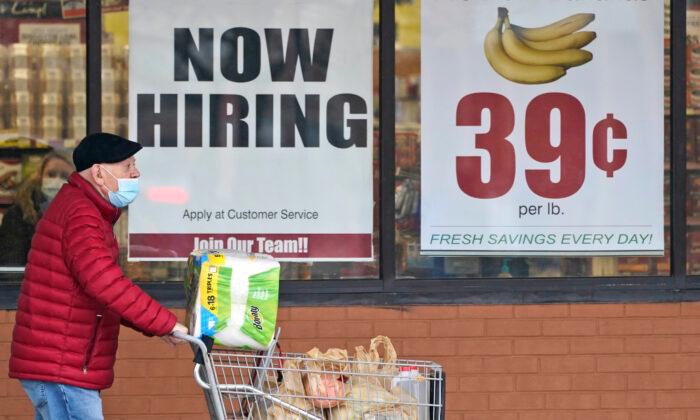The household income of Americans fell last year as COVID-19-related lockdowns wreaked havoc on the economy, according to new figures from the Census Bureau.
Household income includes money from wages or salaries, Social Security, public assistance or welfare payments, interest from savings or bonds, dividend from investments, veterans’ payments, or unemployment and workmen’s compensation, as well as other sources.
Between 2019 and 2020, the real median earnings of all workers decreased by 1.2 percent to $41,535 from $42,065, while the real median earnings of full-time, year-round workers increased 6.9 percent from their 2019 estimate.
However, the total number of those who worked full-time, year-round, declined by 13.7 million between 2019 and 2020, signifying the largest year-to-year decline in the number of full-time, year-round workers since 1967.
The total number of people with earnings decreased by about 3 million.
Meanwhile, the official poverty rate rose from a 60-year low, to 11.4 percent from 10.5 percent in 2019, the first increase in poverty after five consecutive annual declines.
While the thresholds for meeting the official definition of poverty vary in size and composition, the weighted average poverty threshold for a family of four in 2020 was $26,496.
There were 37.2 million people in poverty last year, 3.3 million more than in 2019, signaling the massive economic strains the lockdowns placed on tens of millions of people who were left without work, particularly in marginalized communities.
However, government programs designed to help assist low-income families, such as stimulus checks and $600 weekly unemployment benefits, appear to have somewhat softened the blow.
The Supplemental Poverty Measure (SPM), which includes many government assistance programs such as the Supplemental Nutrition Assistance Program (SNAP), school lunches, housing assistance, stimulus payments, and refundable tax credits, declined by 2.6 percent to a rate of 9.1 percent, the lowest level since it began being measured in 2009.
“I think this really shows the importance of the social safety net,” said Liana Fox, chief of the poverty statistics branch in the Social, Economic, and Housing Statistics Division at the Census Bureau. “When we see differences in trends with the official poverty rate and the SPM ... that’s really the impact of our tax system, that’s the impact of our non-cash benefits.”
Elsewhere, the Census Bureau found that the share of Americans without health insurance was at 8.6 percent last year, amounting to 28 million people. For people with health insurance coverage, 66.5 percent are on private insurance and 34.8 percent are on public plans.
The Biden administration said it has no plans to reevaluate or extend the unemployment benefits, the White House said.
While some advocates of the move, including businesses and lawmakers, hope that the reduction in benefits will lead to a rise in job applications, opponents fear obstacles such as securing child care and lingering fears surrounding COVID-19 may still hamper such efforts.





